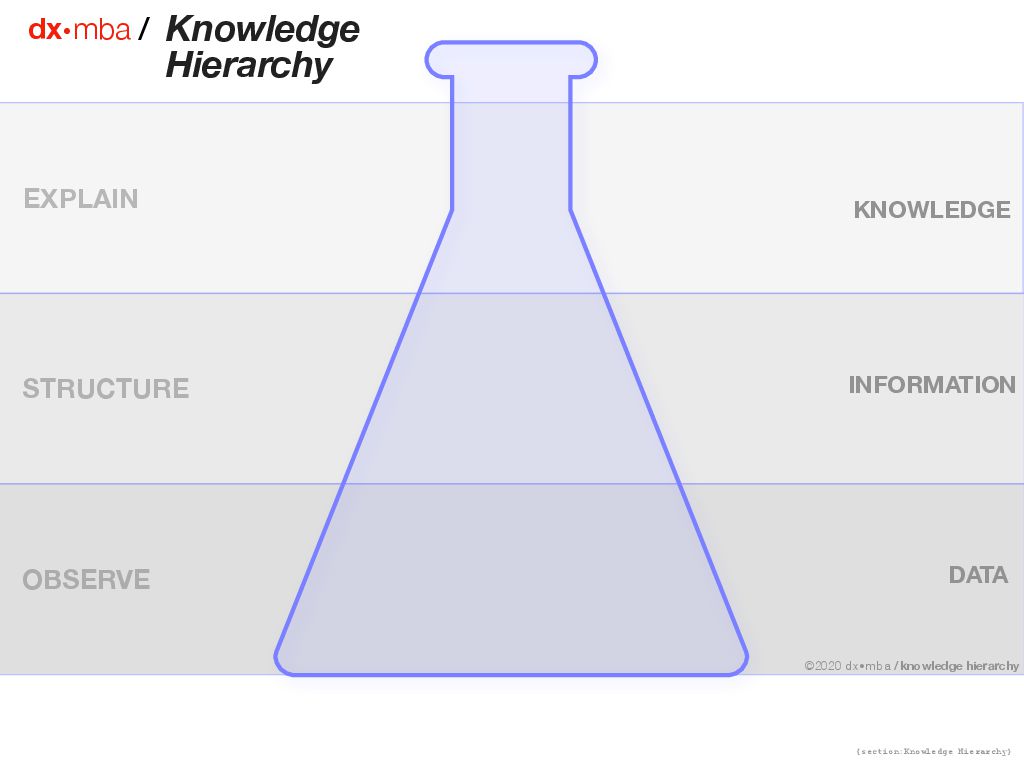Knowledge Hierarchy
The Knowledge Hierarchy describes the underlying structure of the Scientific Method as means of creating knolwedge. This lens helps us distinguish three terms that are used interchangably in common language: data, information and knowledge. We treat these terms as distinct. Here we provide their relationship.

At the base we have data. This corresponds to the “phenomena” portion of the model of the Scientific Method. It is raw and unstructured.
The next level of the hierarchy is information. Information is data that is structured—data that represent some point of view. Formally we call this categorized. (See Categorization.)
The top of the hierarchy is knowledge. Knowledge, as David Deutsch defines it, is information with causal power. Knowledge includes explanations about how the world works—a special kind of information that can be used to explain what causes things to happen.
This hierarchy provides a way to understand where we are in our understanding of the world around us. It makes valid the distinction between data, information, and knowledge expressed in quips such as “that is definitely good information, but is it knowledege?”
In our quest to understand the world around us, the knowledge hierarchy is key because it helps us characterize our own progress in understanding the world. In every context, in our quest to cause progress around us, we must find out means to elevate from raw data to categorized information and to causal knowledge.


